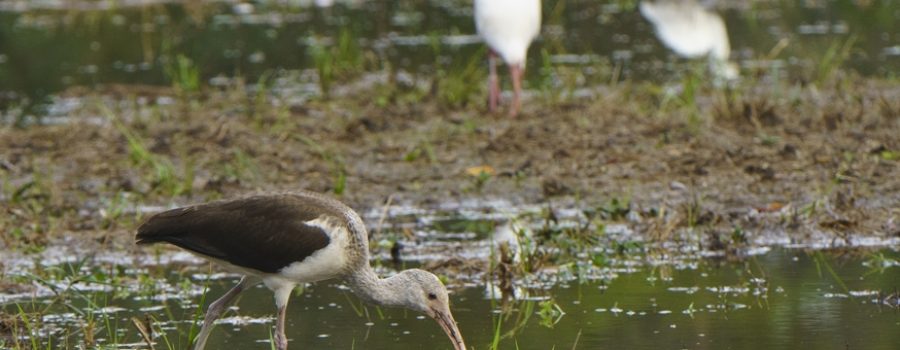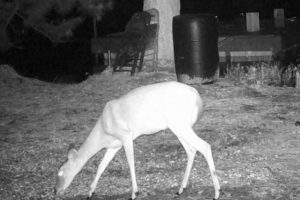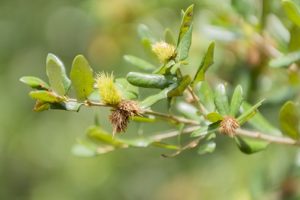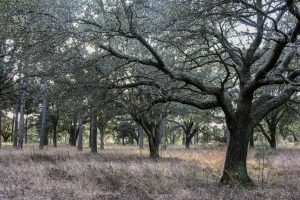2024 Journal
December 28, 2024 —
Rain, rain, rain. It’s been dark and gloomy, but warm this week. It was 68 degrees on Christmas Day. The fields are a soggy mess, so there’s been no bush hogging at all.
December 16, 2024 —
This interesting fungus is Rhizochaete filamentosa, a member of Shelf Fungi Order Polyporales. It was identified as a genus with only nine species in 2004. There are various colors probably derived from the species of rotting wood it lives on.
December 6, 2024 —
This lovely little Variegated Fritillary is a new visitor to the meadow we discovered last week looking for the last of the sunflowers and asters. It’s been raining a lot so we haven’t bush hogged yet. The orchard trees have been ordered for delivery in January.
November 23, 2024 —
Lots of rain lately. The meadow flowers and grasses have gone to seed and the intention is to establish a small wildflower garden at our home where a huge pecan tree that was shading the whole yard was taken down. Musky Mint, Blue Mistflower and a few varieties of sunflowers will go in the mix. We are working on the second project in our NRCS stewardship grant–a small orchard consisting of native species of persimmon, plum and crabapple with a few muscadine vines. Currently, we have reestablished a small drainage ditch and dumped some aged horse manure and dirt where each tree will be planted. The trees are ordered and will arrive in January. Hopefully, we will have some dry weather so can get in there and use the auger to dig the holes and mix the dirt.
November 7, 2024 —
Beautiful warm weather the last week or so with one good soaking rain overnight last week. The sunflowers have gone to seed waiting for the influx of Goldfinches that migrate in during mid-fall. This very pretty Speckled Kingsnake was crossing the road to the pond. It slithered into the weeds and was easily spotted when it began shaking its tail making an audible rattle.
October 28, 2024 —
It’s been 29 days without a drop of rain. The sunflowers in the meadow are going to seed, but Goldenrod is thriving and keeping the bees, wasps and butterflies happy. We found and captured two Giant Silk Moth cocoons on Wax Myrtle. They are hanging in the old aviary now and we’re hoping to see them emerge soon.
October 20, 2024 —
It’s been a traumatic morning. While sitting at the pond eating breakfast and watching a little Coot (it’s a duck) swim around a big bald eagle swooped down from the pine tree I was sitting under and grabbed the poor little duck right in front of me. When I left the eagle was sitting another pine tree picking the feathers and eating it’s catch. It was at once both awesome and horrible.
October 16, 2024 —
The first cool morning of Fall. A front came through and the wind is high. The sunflowers are still at their peak. The world is a beautiful place this morning.
September 22, 2024 —
The Water Cowbane has gone to seed and the Swallowtail count is over. They made have had a disappointing population this summer, but there is no lack of Buckeyes. They are everywhere! Hundreds of them in the meadow. So far as we know their only host at Vista Farm is Purple False Foxglove, a beautiful, tall, light green and airy plant that produces lovely pink flowers in abundance. Every plant has at least 5 or six caterpillars.
September 19, 2024 —
When the last caterpillar in the meadow had formed its cocoon we became aware that Hurricane Francine was on track to pass near Madisonville. Our disappointment in seeing so few Swallowtails actually hatching caused us to wonder whether we might be able to capture this last pupa and try to hatch it in a safe place away from high wind, torrential rain, wasps and other predators. We found a large glass jar, cut the stem and put it all in the jar with a piece of net securing the top. Nine days later a beautiful Black Swallowtail emerged just as we were packing the car for a trip to north Louisiana. We quickly cut the net and set him so he could spend an hour or so drying his wings and getting ready to fly. There are plenty of blossoms nearby for him to feed from, so hopefully, our swallowtail will have a good life.
September 5, 2024 —
Just as we thought the Swallowtail hatching season was about over we found three caterpillars on September 3 and 4, and 4 caterpillars on September 5. The cocoon is long past the time it should have morphed and flown away, but we are still watching it. A new leaf miner has been identified. Caloptilia triadicae, is a tiny larva that burrows inside the leaves of Chinese Tallow trees and when fully developed rolls a piece of the leave around itself to morph into a moth. It was first discovered in the U.S. in 2004 in Baton Rouge and Sumter County, Alabama, but is spreading. Click on the link to see its leaf damage.
September 2, 2024 —
The Swallowtail count continues . . August 27-29 we found one cocoon and only 1 caterpillar in the meadow. August 30-31 we found one cocoon and 4 caterpillars eating the tips of developing seed heads. Although on September 1 we found 6 caterpillars along with the cocoon, on September 2 we found only 2 caterpillars and the cocoon. One of the two caterpillars found on September 1 appears to have been attacked by a predator. During this time period there were several Black Swallowtails flitting about the property along with Sulphurs, a Long-Tailed Skipper and several Buckeyes.
August 26, 2024 —
Swallowtail count . . . Since August 20 there have on been two cocoons in the meadow and a few caterpillars here and there. On August 23 the oldest cocoon hatched after 9 days leaving only one cocoon in the meadows. A wasp was eating the empty cocoon. The Swallowtail’s host plant, Water Cowbane, is nearly all in seed. The few caterpillars observed during these six days are eating the tough stems and disappearing, probably to predator wasps or mantises, overnight. On August 26 there was only one cocoon and no caterpillars in the meadow.
August 20, 2024 —
Swallowtail count . . . On August 17 there were only two cocoons in the meadow. No caterpillars were found, but several praying mantises 4-5 inches long. Mantises eat caterpillars and butterflies, so they could be dining on some of our Swallowtails, Monarchs and Sulphurs and Buckeyes. On August 18, again, only 2 cocoons. On August 19 we found 1 large caterpillar, two small ones, and the same two cocoons. On August 20 there were two cocoons and one caterpillar. Cowbane stems with large flower clusters are becoming a little scarce now. As soon as the top clusters began turning to seed the caterpillar population began to decrease. The caterpillars are being reduced to eating the fibrous green outer layers of the stem rather than the soft tips and flowers.
August 16, 2024 —
Swallowtail count. . . On August 13, only one caterpillar and 1 cocoon on Water Cowbane; on August 14, two cocoons; on August 15, two cocoons; August 16, two cocoons and one caterpillar. Two Carolina mantis were observed and one Monarch butterfly feeding on Water Cowbane in the meadow on August 16.
August 12, 2024 —
Swallowtail count . . . On August 10 there were six caterpillars on six Cowbane stalks including 1 cocoon; on August 11 there were three caterpillars on three stems including one cocoon; and on August 12 there were two caterpillars including one cocoon. The other caterpillar had attached himself to the stem but had not begun to spin the cocoon. In the meadow at any given time, several Swallowtail butterflies were flitting about, 1 Gulf Fritillary, a couple of Buckeyes and many skippers.
August 10, 2024 —
Swallowtail count . . . On August 6 the butterfly in the cocoon had hatched. There were 15 caterpillars on 15 Water Cowbane stalks. On August 7 there were 13 caterpillars on 13 stalks and one Swallowtail butterfly flitting from flower to flower in the meadow. On August 8 there were 11 caterpillars on 11 stalks and on August 9 there were 8 caterpillars on 9 stalks. Over the course of these days a Palamedes Swallowtail and an Eastern Tiger Swallowtail were observed in the meadow.
August 6, 2024 —
Swallowtail count continues . . . On August 4 there were 17 caterpillars on 17 Water Cowbane stalks including one cocoon. On August 5 there were 15 caterpillars on 15 stalks including one cocoon. It was late afternoon and no butterflies were active in the meadow.
August 4, 2024 —
Swallowtail count . . . On July 30, there were 21 caterpillars including 1 cocoon; on July 31 there were only 10 caterpillars including 1 cocoon and there were four Swallowtails feeding in the meadows. On Thursday, August 1 there were 12 caterpillars including 1 cocoon. On August 2 there were 17 caterpillars including 1 cocoon. On August 3 there were 16 caterpillars including 1 cocoon and three Swallowtails including a Palamedes, and two Black Swallowtails were feeding in the meadows.
July 29, 2024 —
Continuing with the Swallowtail caterpillar count . . . on the morning of July 27 there were 22 caterpillars on 22 stalks of Water Cowbane and one caterpillar on a branch of Savanna Meadowbeauty. The caterpillar on the meadowbeauty disappeared from sight in the late afternoon. One Black Swallowtail was flying around in the meadow. On July 29 there were 20 caterpillars on 20 stalks, one cocoon on Water Cowbane, 2 Eastern Swallowtails and 1 Black Swallowtail feeding in the meadow. The cocoon appeared to be only a few hours old as it was light in color and very soft.
July 26, 2024 —
Continuing the Swallowtail caterpillar count . . . on July 23 there were 26 worms on 22 Cowbane stems; on July 24 there was pouring rain; on July 25 there were 28 worms on 24 stems and today, again, there was rain all afternoon prohibiting us from getting out in the meadow.
July 23, 2024 —
Continuing the Swallowtail caterpillar count . . . on July 20 there were 5 worms on 4 Water Cowbane stalks in the west meadow and 2 on 2 stalks in the east meadow. On July 21 there were 10 caterpillars on 8 stalks in the west meadow and 6 caterpillars in the east meadow. On July 22 there were 15 caterpillars on 15 stalks in the west meadow and 8 caterpillars on 5 stalks in the east meadow. The early Cowbane umbels are almost entirely open and others are maturing. Two of the first caterpillars appear fully developed and ready to form their cocoons at any time. Whether we find them is unknown. Rain has been heavy at times over the last 3 days.
July 19, 2024 —
Continuing the Swallowtail caterpillar count . . . On this day in the west meadow there were 7 caterpillars on the same six stalks. Ummm, it seems something is eating my caterpillars. Dragonflies? Robber flies? Still none in the east meadow.
July 18, 2024 —
Having planted two acres of meadow last fall with native seeds for swallowtails and other pollinators we are counting the number of swallowtail caterpillars and the particular host on which they are found. Water Cowbane is a preference and in the middle of July, it is coming up in abundance in both the east and west meadows. No caterpillars have yet been seen on the east side, but on Wednesday the first tiny ones were found on six stalks on the west side where 11 caterpillars were feeding.
July 13, 2024 —
It’s July and we have tall stalks of Water Cowbane just starting to unfold their lacy umbels of white flower clusters. The Swallowtails have waited patiently and soon we’ll be counting the number of caterpillars. Last year only a few were spotted, but this year, with the addition of Cowbane seeds in areas where there were none, we are hoping for a higher count. Thanks to the NRCS stewardship program we were able to plant two new hosts for them which will become established in the coming years.
June 26, 2024 —
Take a walk at the edge of the forest and find beautiful American Black Elderberry. It’s a tall, native Louisiana shrub with lacy white flowers that turn into clusters of dark berries that have been studied for their medicinal value and as an antioxident.
June 19, 2024 —
It’s National Pollinator Week — June 17-23. See our new article “Grass Is Everywhere” in which I provide a reprint and a link to the Natural Resources Conservation Service’s newsletter and a story about the value of native grasses to the survival of pollinators. Enjoy!
June 10, 2024
While looking for wildlife in the wetland at Vista Farm today we were surprised to see stretched out on the path a huge Western Mud Snake eating a huge Three-toed Amphiuma. It took more than an hour for him to swallow the whole thing and then he had trouble even getting across the path carrying such a heavy load. It was quite interesting.
June 2, 2024
Rain since Friday–much needed. The pond is full again. We planted a few new iris on the south shoreline and are continuing to cut back the overgrown brush. Our faithful old Catahoula cur, Morgan, is gone. He was 13 and had been in bad health for months. No doubt he and his old friend Tipper are off hunting somewhere together, happy and young again. The Captain, Rhett and I miss you, buddy.
May 27, 2024
Another new native was spotted in the new pollinator meadow–American Basketflower looks like a tiny thistle with its woven pattern underneath the flower. This is the meadow on May 24 with meadow beauty, milkweed, and rushes. Clearing brush on the south shore of the pond has led to the discovery of small inkberry shrubs, hollies, tupelos and swamp bay.
May 19, 2024 —
Another new native is making a show in the meadow we planted last fall for pollinators as part of our NRCS Stewardship commitment: Indian Blanket, Gaillardia pulchella, is a brilliant orange-red and yellow aster. We saw this beautiful flower once growing beside an erosion fence at Rutherford Beach, Hwy. 82, east of Cameron Pass, but it seems there was nothing left after Hurricanes Laura and Delta in 2020 so who knows whether it survived.
May 15, 2024 —
The Spring Migration began on April 1st, and since then more than 14 million birds have flown over Louisiana on their way to destinations further north. This incredible migration will continue for the next several weeks with the peak ending May 31st. It’s important for Louisiana residents to turn off or turn down exterior and interior lights between 11 pm and 6 am during these last few weeks of the spring migration to lessen the chance of birds colliding with buildings and houses. Two new trees and one new lichen have been added to the Plants gallery-Southern Crabapple, Bald Cypress and Christmas lichen.
May 13, 2024 —
A beautiful weekend with temps in the upper 70s and plenty of sunshine. The wildflower seeds we planted last fall for the new pollinator meadow are doing well. We are in the first year of participation in the Natural Resources Stewardship Program, a department of the U.S. Department of Agriculture. We have three more projects to complete over the next four years: 1) an acre of fruit and nut trees, 2) clearing invasive species, and 3) pond improvement. Two new trees and one new lichen have been added to the Plants gallery-Southern Crabapple, Bald Cypress and Christmas lichen.
May 2, 2024 —
We’re clearing brush from the south side of the pond and have some interesting observations to start off the month of May. We discovered two new galls: Persimmon Leaf Blister Gall, formed by Aceria theospyri, a very tiny mite, looks bad but doesn’t seem to be harming the trees overall; the other one is as yet unknown and it is not on an oak, so I don’t know. Here it is if someone can identify it either here or on iNaturalist.
April 29, 2024 —
A bit dreary today with a little needed rain. Yesterday was beautiful and the butterflies were busy in the meadow. Swallowtails are our favorite and this beautiful Black Swallowtail was competing with a Pipevine Swallowtail for the Verbena rigida. A number of Monarchs were in the meadow enjoying a big crop of Long-leaf Milkweed.
April 21, 2024 —
This is for the German hacker who is trying to crash my website: I know who you are. I am watching you.
April 19, 2024 —
A late afternoon exploration of the pond yesterday led to the discovery of quite a number of small, perhaps three-year-old, tupelo trees along the edge of the water. There are two large tupelos, one on the east side and one near the southwest corner which probably produced the fruit that a heron dropped in just the right spot to take root. Without much care at all they will grow into large fine trees.
April 16, 2024 —
We planted a little iris in 2021 just after our friend and helper, Johnny Lemoyne, passed away on July 3. He gave it to us in a pot saying he knew I loved iris and he wanted me to plant it even if it had never bloomed and he didn’t know what color it was. Well Johnny, it’s purple, very beautiful and happy living at the edge of the pond where you loved to fish. We miss you. By the way, your lure is still snagged in that tree branch.
April 6, 2024 —
A perfect day to be out in the meadow and the wetland. The Dahoon Hollies are flowering in the meadow. A ripening Tall Beakrush in the wetland.
Easter Sunday, March 31, 2024
In the early Spring, a pair of Carolina Chickadees are hunting insects in a bug condo. We came out to the meadow early this morning hoping to see the owl the Captain watched yesterday as it hunted for small prey. It was a no-show.
March 26, 2024 —
The new pollinator meadow is alive with bright yellow Sneezeweed and Crowpoison, a species of lily that is prolific in the early spring in south Louisiana. Pine pollen is about at its peak and every surface is a dull yellow. The blackberries are blooming and many new patches of Pale Pitcher Plant are popping up. Yep! It’s spring at Vista Farm.
March 6, 2024 —
The most beautiful day! Warm and sunny. It’s good to be alive and watch new life springing up in the meadows.
February 29, 2024 –
A pair of Wood Ducks appeared at the duck feeding station at the pond. They landed and headed straight for the food so we believe they are the same pair who were here all last year. The yellow jasmine is blooming in the woods and anywhere it can climb. A few early Buttercups are even blooming in the meadow.
February 21, 2024 –
Thick, thick fog this morning, but the temp has warmed to 71 degrees with bright, beautiful sun. What a perfect day for a walk around the pond. A few spring flowers have popped open, white violets and Pineland Daisies.
February 1, 2024
A week of mostly very pleasant temps with enough sun to combat the winter gloomies.
January 24, 2024 –
Bitter cold last week and rain, rain, rain this week. In south Louisiana, 17 degrees is the only “climate emergency” we worry about. We love carbon dioxide.
January 12, 2024 –
Welcome to the 2024 Journal of weather and species sightings at Vista Farm. After some torrential rains in the last couple of weeks, the pond is again full. The ducks seem a little confused but they’ll get used to swimming out, rather than walking out, to the big logs we sank for them to roost on. It’s been a little cool, but the weather report for next week is for a freeze.





Recent Comments